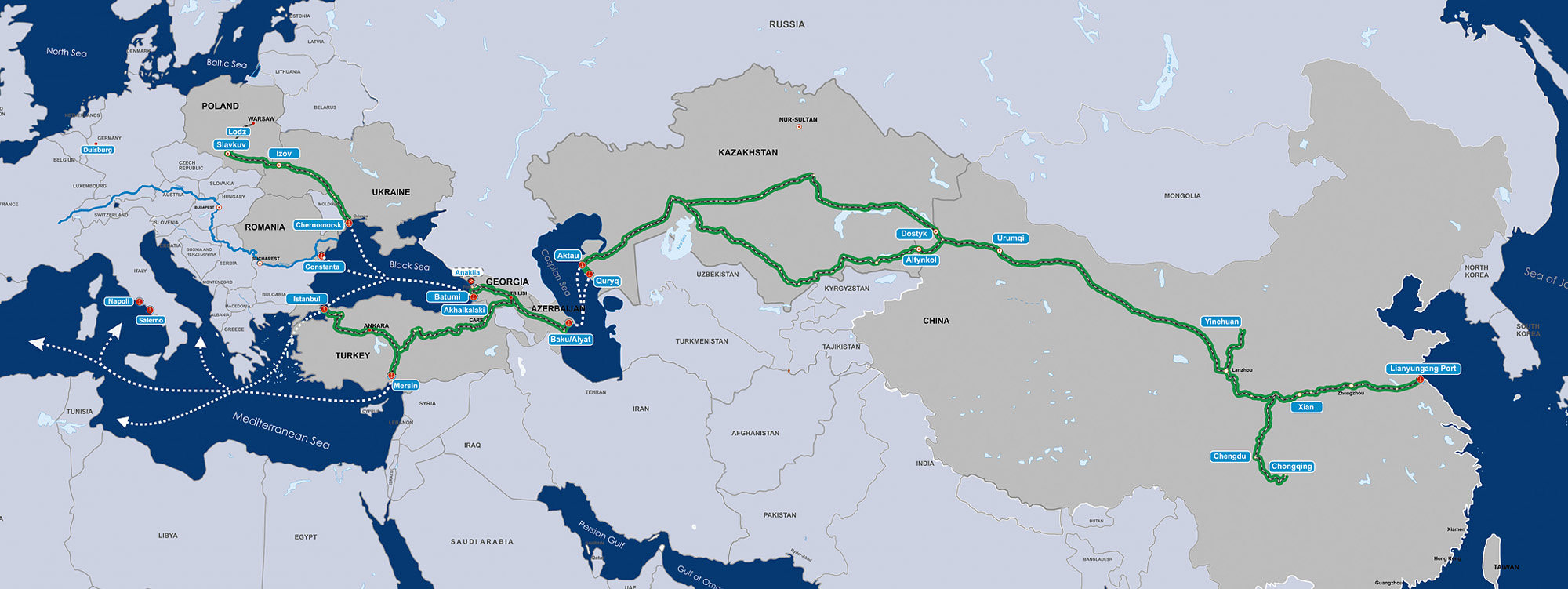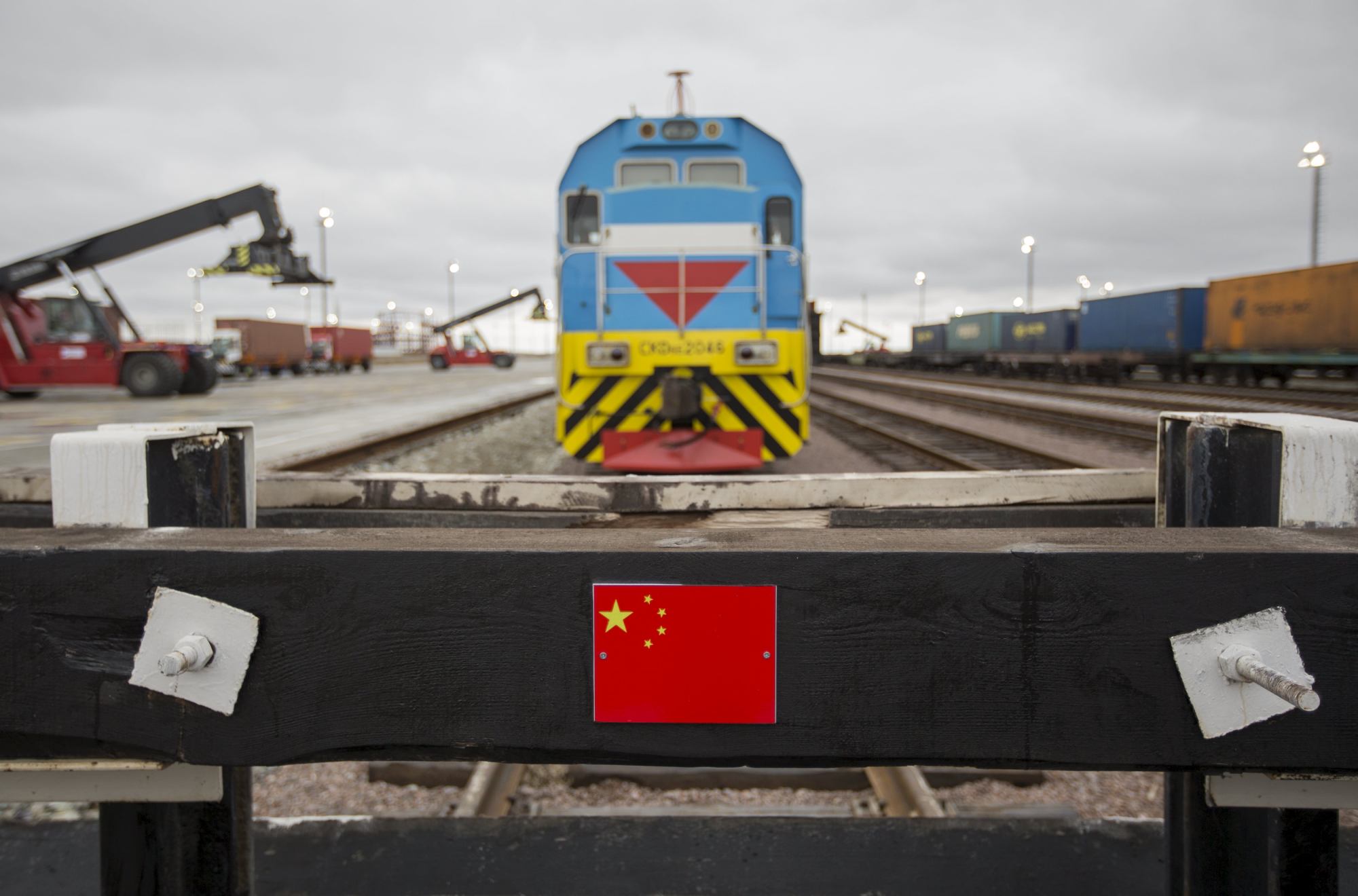In 2022, over 23 million tonnes of goods were transported via rail between Kazakhstan and China, a figure that has since increased by 22 per cent. This shows the importance of overland routes through Central Asia for China’s trade with Europe.

The Middle Corridor connects Southeast Asia and China with Europe, traversing Kazakhstan, the Caspian Sea, Azerbaijan, Georgia and Turkey before reaching European Union countries. Last year, cargo transport along this route exceeded 2.7 million tonnes, growing by 86 per cent. This figure is expected to grow further to reach 4.2 million tonnes this year.
The Middle Corridor can contribute to reversing this trend, while also lowering costs and offering a more sustainable trade route, as land-based transit like rail is more carbon-efficient than air or maritime freight. To realise the potential of the Middle Corridor and address the bottlenecks along the route, work is being done by Kazakhstan to improve infrastructure and terminal capacities, expand port capacities, increase rolling stock, remove administrative barriers and create favourable conditions for carriers.
These efforts will increase the route’s capacity to 10 million tonnes per year by 2025. Additionally, a major project being implemented is the construction of the second track of the Dostyk-Moiynty Railway in Kazakhstan. Slated for completion by late 2025, this initiative aims to enhance transit traffic between China and Europe, with an anticipated economic impact of US$8.8 billion over the next 20 years.
However, to ensure the Middle Corridor achieves its objectives, we need the support and involvement of other countries. To date, Austria, Germany, Latvia, Lithuania, Estonia and Hungary have expressed interest in joining the Trans-Caspian International Transport Route association. The EU recently announced a €10 billion (US$10.85 billion) investment to bolster the Middle Corridor.
The EU plans to invest as much as €18.5 billion more to ensure that roads, railways, and the Kazakh seaports of Aktau and Kuryk can provide smart, safe, and fast transport services from China to Europe. Furthermore, a road map for development to 2027 has been agreed with Azerbaijan, Georgia and Turkey to eliminate bottlenecks along the Middle Corridor.

Nevertheless, more needs to be done. According to the European Bank for Reconstruction and Development, a significant capital injection of between US$19-21 billion is required to overcome the Middle Corridor’s logistical and infrastructural bottlenecks.
This includes developing high-capacity freight terminals, modernising railway systems and implementing advanced tracking and monitoring technologies. Asian and Western technologies and expertise can significantly contribute to this development.
Transport is the backbone of the modern economy, crucial for the exchange of goods, capital and services across regional borders. It is therefore essential to develop new transit routes. These sustainable routes can also support efforts to combat climate change and provide long-term solutions to expanding populations and demand.
As a bridge between the East and the West, Kazakhstan will continue to play its part in facilitating regional and global trade. We hope our state partners across Asia and Europe will join us in supporting our transport networks and projects, including the Middle Corridor, which will facilitate economic growth throughout Eurasia, both in the short and long term. It is essential not to miss this opportunity.
Marat Karabayev is Kazakhstan’s minister of transport

